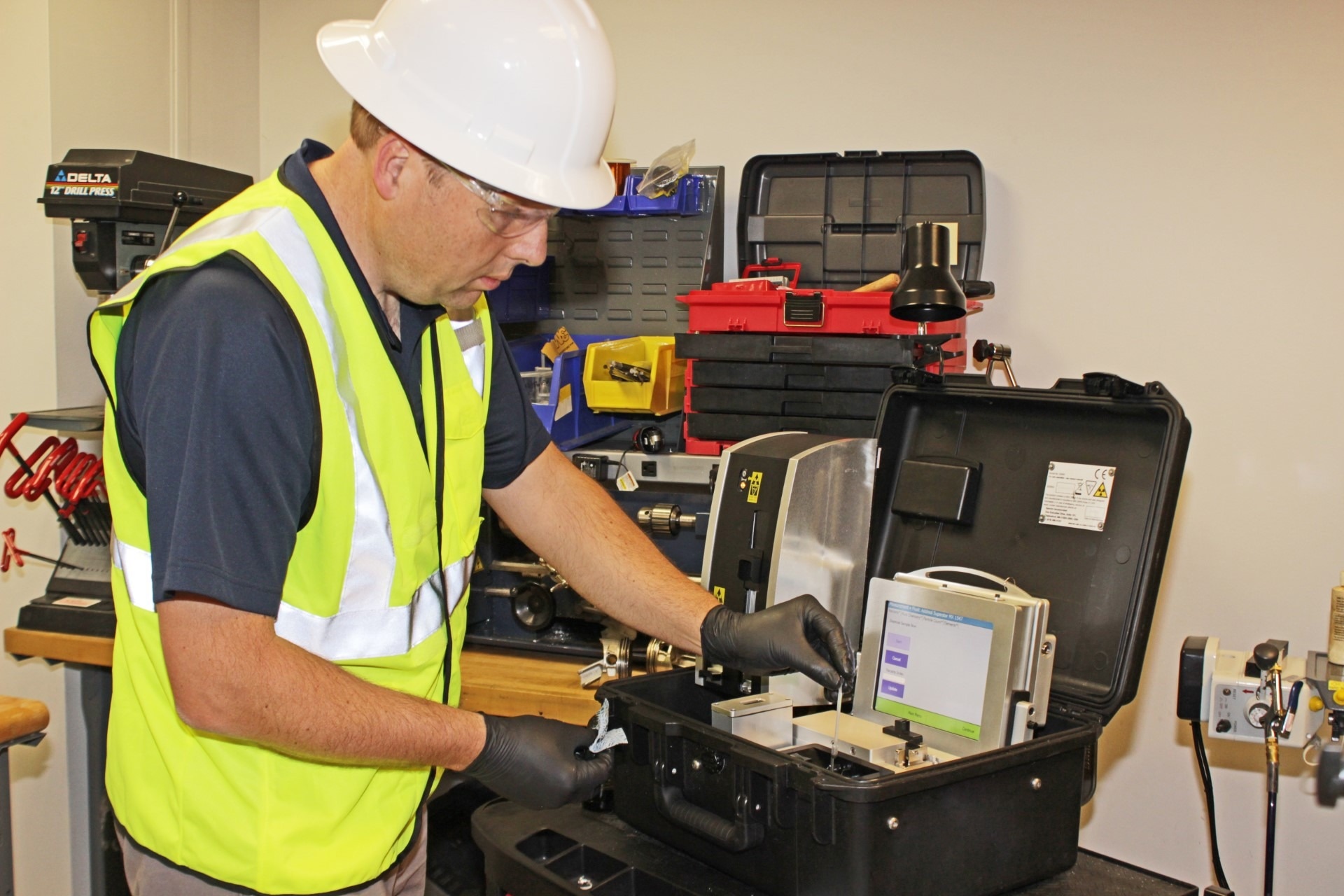If a wind turbine isn't turning, it isn't generating power causing potential losses up to £5,000 per hour. While scheduled downtime for purposes like maintenance can be managed, ensuring reliability is crucial for a sustainable future. Unplanned downtime not only diminishes production but escalates losses. Here Dr. Tom Knott, product manager for oil condition monitoring technologies at SciMed, the UK's largest lab instrument distributor, explores how regularly monitoring turbine lubricants and hydraulics cuts costs and bolsters dependability.

Image Credit: SciMed
In regular wind turbines the gearbox and the hydraulic system demand regular monitoring. Currently, this monitoring typically occurs biannually, which isn't regular enough. This infrequency primarily results from cost, time constraints and sample accessibility issues.
While many wind turbines now incorporate online particulate testing systems, these often prove qualitative at best, merely indicating whether the turbine is ’operational’ or ’non-operational’. Modern on-site testing, as provided by Spectro Scientific’s instrumentation, offer rapid results with enhanced precision. Most importantly these data are utilised alongside integrated diagnostics to offer immediate, actionable, and targeted guidance to turbine maintenance professionals.
How to Approach Oil Condition Monitoring
Across a range of industries, two common inefficiencies persist with respect to reliability and lubrication programs; excessive non-condition-based oil replacement and neglecting asset health monitoring. Both extremes carry substantial costs and inherent risks.
A key factor in oil monitoring is ensuring a representative sample that will reveal the true operational health of the asset. Using bypass valves and obtaining fluid samples during routine operation allows for a more accurate assessment of oil quality without needing to halt operation. Field laboratories, designed for on-site use, enable maintenance engineers to extract critical data from these samples immediately rather than allowing for delays that then require the samples to be appropriately re-homogenised due to potential for partitioning or settling whilst left idle.
Implementing widespread on-site condition monitoring holds immense significance. This approach optimises uptime and asset reliability, resulting in enhanced power generation. A notable example is in gearbox maintenance. Without regular monitoring, these crucial components are vulnerable to failure, which could lead to the breakdown of the entire asset.
This principal also applies to hydraulics. Ensuring fluid remains clean, dry and free of particles is imperative as the introduction of particulate contamination by dust or abnormal wear can trigger catastrophic system failures, with significant downtime and cost implications.
Gearbox and other system failures often stem from insufficient lubrication. Without appropriate lubrication, system components can rub, resulting in wear and tear. This friction leads to impact fatigue on bearings, causing micro fissures and the eventual production of metal contaminants as components break off. By regularly monitoring these systems, contamination can be identified before it becomes problematic.
In all systems, an initial increase of very fine particulates, each measuring less than four microns across, is a common occurrence before levels plateau. This initial increase is considered acceptable within certain levels. However, larger particles breaking off, or increased trends in fine particles can be indicative of a greater problem. Regular monitoring for particle counts and size distributions, in particular recognising progressive or abrupt changes in these parameters, may be used to identify underlying problems. This proactive approach allows maintenance teams to address issues promptly, ensuring longevity and reliability of the systems performance.
Field labs are becoming essential assets for routine oil condition testing, including critical components like gearboxes. Field labs, like those offered by SciMed, can detect many different parameters, including size distribution of particles, elemental analysis, Total Acid Number (TAN), water contamination, oxidation, and much more.
The Spectro Scientific FieldLab Series offers onsite analysis of turbine samples, regardless of environment. Whether its extraction from off-shore turbines, or on the ground, this portable equipment provides a comprehensive results and maintenance report in just 15 minutes.
While external laboratory testing will remain a cornerstone of fluid analysis, the FieldLab allows easy sample cross referencing, combining the power of lab-quality testing with the convenience of on-site analysis by technicians and engineers.
The FieldLab also boasts impressive user-friendliness and customisable parameters for diverse applications. It includes an array of training tools, including instructional videos, onboard toolkits, software wizards and expert guidance visits, ensuring maintenance engineers can harness the full potential.
Maintenance engineers can utilise this to create tailored alarms relevant to each system, setting limits for particulates, water contamination and increasing TAN etc. This empowers engineers to know the most about their assets, taking control of oil condition monitoring and contributing to equipment reliability and longevity.
With present economic challenges, external lab analysis fees continue to rise. Combined with the potential to miss critical machinery faults whilst waiting for analysis turnaround can result in substantial annual cost to industry, including renewable power generation.
In contrast, the Spectro Scientific FieldLab streamlines the process. Maintenance staff can test, receive results, and make important decisions in just a few short moments. This rapid turnaround enables immediate validation of oil samples, ensuring prompt resolution of any issues following servicing, and providing relevant information for first-time fixes.
Additionally, the FieldLab Series employ X-ray fluorescence (XRF) analysis, a technique that was previously exclusive to US Military field analysis systems. This innovation enhances sensitivity for the detection of the earliest onset of abnormal wear contributing to the most efficient and immediate response to asset maintenance.